So, you’re a beginner and want to know which type of harmonica to buy? The short answer: buy a 10-hole diatonic harmonica in the key of C.
Why? Because, most beginner lessons, and all of the lessons that I teach on YouTube and in my Beginner to Boss course are on the 10-hole diatonic harmonica, in the key of C. Oh, and it’s one of the simplest and most affordable types of harmonica to get started on 🙂 And if you don’t know what brand to get, check out my Which Harmonica to Buy? article.
Hold on! What About the Other Types?
I’m glad you asked. 😛 In addition to the standard 10-hole diatonic harmonica there are two other main types of harmonicas; the chromatic harmonica, and the tremolo harmonica.
If you want to take the deep dive into all three types of harmonica, pros and cons, best brands, then buckle up…
The Diatonic Harmonica
| PROS |
|---|
| • Inexpensive |
| • Compact |
| • Durable |
| • Easy to Play |
| • Hard to play “wrong” notes |
| • No Music Theory Required |
| • Notes Will Bend a Lot for Bluesy Sound |
| • To Change Key, Just Change Harmonica |
| • Less Airflow Required than Tremolo harmonica |
| CONS |
|---|
| • The pattern of playing notes in each octave is different across the harmonica |
| • There are “missing notes” – some melodies can’t be played at all |
| • Techniques to the play “missing notes” are challenging to learn |
| • More than 1 harmonica is required to play in many keys |
What is a Diatonic Harmonica?
One of the nicknames for the diatonic harmonica is the “tin sandwich.” – it’s made up of 5 layers! If we were to build a tin sandwich from the bottom up, our layers would be: the bottom cover plate, the draw reed plate, the comb, the blow reed plate, and finally the top cover plate.
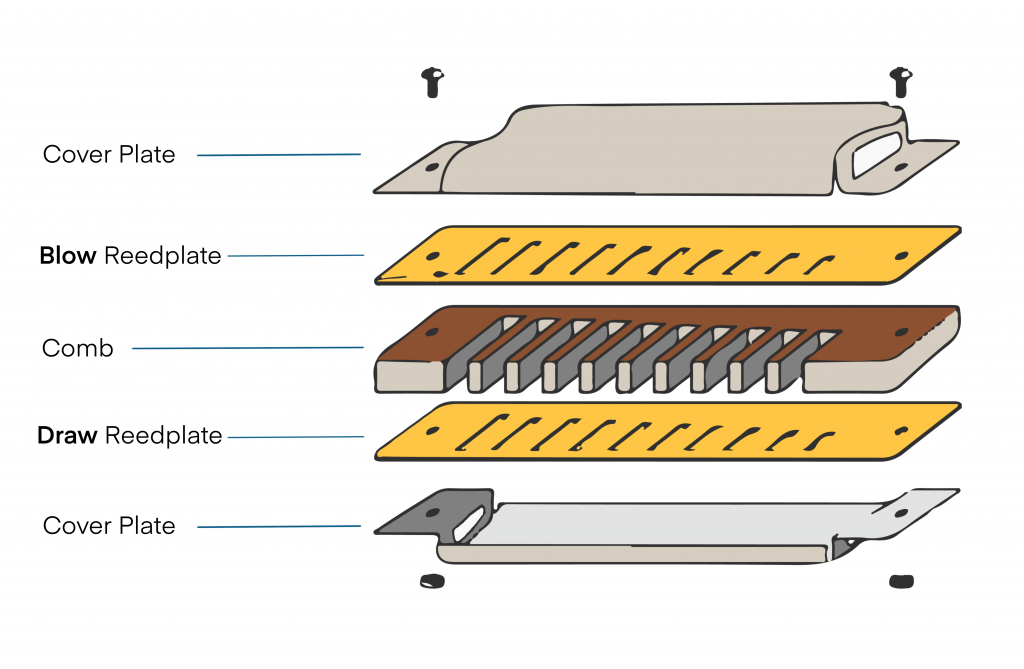
As you can see, each reed plate has 10 reed slots, and above each slot is the free end of a reed fastened to the reed plate, which vibrates from the player’s breath to create sound.
Reeds are most often brass, or sometimes stainless steel. Combs can be wood, metal, composite, or plastic, and have a chamber to direct the air to each reed plate when blowing and drawing.
Diatonic Pros
The Sound We Love
The diatonic harmonica is the most common harmonica that you will encounter in popular music. From Pop and Rock like Billy Joel, Bob Dylan, Neil Young, Tom Petty, or Blues Traveler, to blues like Little Walter, Charlie Musslewhite, James Cotton, or Paul Butterfield, to country like Willie Nelson or Charlie McCoy, the diatonic harmonica is the weapon of choice.
The Value We Love
Diatonic harmonicas are inexpensive compared to most musical instruments. The cheapest one that I love, The Fender Blues Deluxe is less than 20 bucks, and the Hohner Blues Band is even cheaper than that.
But even professional-level diatonic harmonicas (which are great for beginners too!) are often around $50-$100 bucks.
Not only are diatonic harmonicas very inexpensive, but (compared to chromatic harmonicas which have a spring-loaded button on the side that moves components inside of the harmonica) the simplicity of design and strength of materials used to construct diatonic harmonicas means that they are the most durable harmonicas, and will often last for years, or even decades!
The Ease We Love
Because the tremolo harmonica requires more air to play, and because the chromatic harmonica requires that you have to learn a ton of music theory, the diatonic harmonica is undoubtedly the easiest harmonica to learn how to play.
And because it’s harmonized to a specific key, it’s also difficult to play “wrong” notes, which means it’s easy to start sounding great very quickly. Just randomly blow or draw any set of notes on a diatonic and you’ll be playing lovely sweet chords without even thinking about it (try doing that on guitar or piano!) And just like one of those cheesy ads: “wait – there’s more!”…
The diatonic harmonica is the only harmonica on which you can achieve the most expressive bending of notes. Bending notes is a technique which allows the player to change the pitch of a note by changing the shape of the inside of their mouth.
Whether it’s a cowboy by a campfire, or a bluesman in a juke joint, bending is that soulful wailing sound, which mimics the cry of the human voice, and is the sound that made so many of us fall in love with the sound of the harmonica in the first place.
And this sound is best achieved with… a diatonic harmonica. It is actually possible to bend a tiny bit on the chromatic harmonica, but not those deep, soulful, gut-wrenching bends the diatonic can produce. It is actually possible to bend on the tremolo harmonica as well, but for reasons you’ll see later when we examine the tremolo in detail, it’s just not the same as a standard 10-hole diatonic.
The Alt-Tunings We Love
One response that some harmonica innovators have come up with, that helps to address the issue of missing notes (covered in the “Cons” section below), is to create diatonic 10-hole harmonicas with alternative tunings. Once you’ve got a handle on the standard tuning, these alternate tunings are another whole galaxy of harmonica tonalities that are exciting to explore!
Lee Oskar was probably the first major pioneer in this area with his tunings in Natural Minor (which sounds pensive, somber, or tough), Harmonica Minor (which sounds Far Eastern), and Melody Maker (which sounds great in country and old standards).
I personally own the Natural Minors in all 12 keys, the Harmonic Minor in a few keys, and the Melody Maker in all the keys they make. Hohner and Seydel both offer Natural Minor tunings as well.
More recently, Brendan Power developed the PowerBender and PowerDraw tunings, both of which attempt to layout the top 4 holes of the harmonica, in formats more similar to the bottom 6 holes (where the most expressive playing happens in the traditional Blues approach).
For other alternative tunings, Seydel is the best company to order from, but their cheapest offering at the time of this writing is nearly double what you pay for a harmonica like a Lee Oskar or a Special 20.
Seydel offers a harmonica configurator for many tunings: Harmonica Minor, Will Wilde Rock, Will Wilde Minor, Orchestra, PowerBender, Power Draw, Pentatonic, Paddy Richter, Major Cross, Circular (1st pos.), Circular (2nd pos.), Diminished, Augmented, Bebop Tuning, Four Key, Dorian, EDHarmonica, Country, Easy 3rd / Do It!, and Whole Tone. And if that’s not enough for you, they’ll make any other custom tuning you want to dream up!
If you want to go further down this rabbit hole, check out this forum post on alternate tunings, and join the conversation!
Diatonic Cons
Missing Notes?!
If the diatonic harmonica is so great, why doesn’t everybody play it?
While the vast majority of people do play the diatonic compared to the other popular types of harmonica, it does have its limitations.
Because it’s tuned to play chords when blowing or drawing, there are many notes (that wouldn’t sound good in those chords) that can’t be played at all. Or I should say, they couldn’t be played until some innovative Americans developed the technique known as bending (which is not a beginner technique.) But even with good bending technique, there are still some notes that just cannot be played on a standard 10-hole diatonic harmonica. Not until an even cleverer American came along…
In more recent history, Jazz harmonica virtuoso Howard Levy pioneered some very advanced techniques known as overblows and overdraws, which afford the player the ability to get all the “missing” chromatic notes across the full 3-octave range of the harmonica. Other modern players, notably Jason Ricci and Carlos De Junco, have also incorporated these difficult techniques into their playing careers, making the humble diatonic insanely versatile. ⚠WARNING: These advanced techniques are difficult and can take years to master.
The Case of the Missing Notes
The diatonic harmonica has 10 holes that produce 19 notes. The reason there are 19 and not 20 is because draw -2 and blow 3 are tuned to the same note:
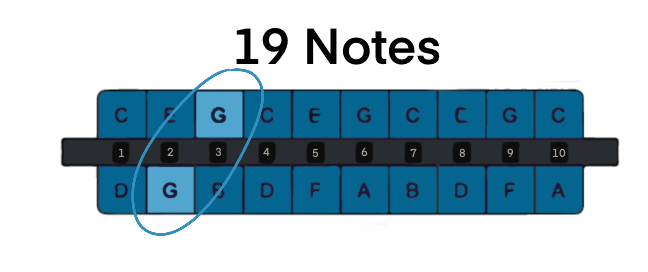
Looking at the pattern of keys on a piano, it’s easy to see there are 12 notes that repeat.

Each 12-note section is called an octave. Since the diatonic harmonica covers a total range of 3 octaves, and since each octave has a total of 12 possible notes within it, that means theoretically the harmonica should be able to play 36 notes + the highest note C = 37 notes.
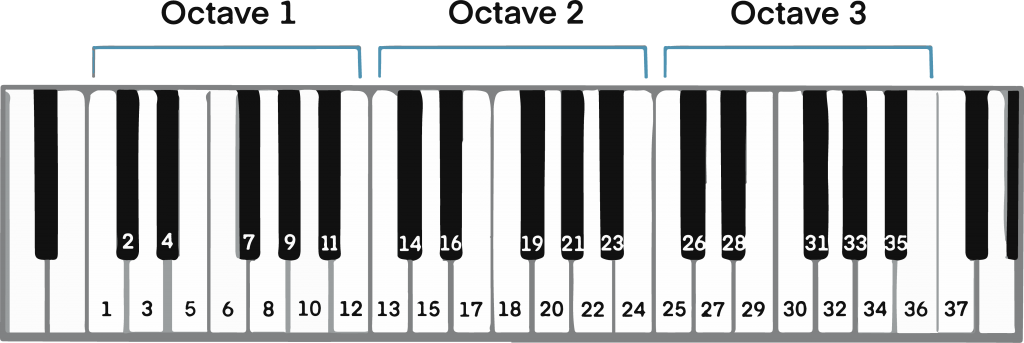
But instead of 37, the harmonica can only produce 19! Note that all of the black keys are missing, as well as a few of the white keys:

This is part of why it’s hard to play a “wrong” note. Blowing and drawing multiple holes at once produces pleasing chords. An additional 12 notes can be accessed using the bending technique, 8 notes through draw bends on holes 1-6, and 4 notes through blow bends on holes 1-10.
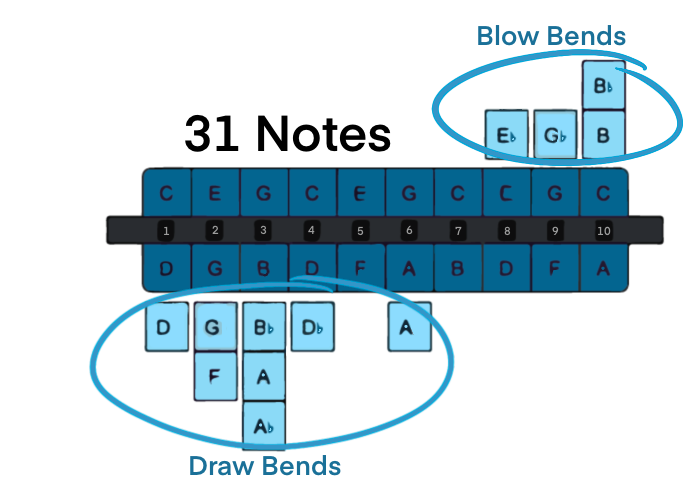
Now we see a total of 31 notes. That’s better!
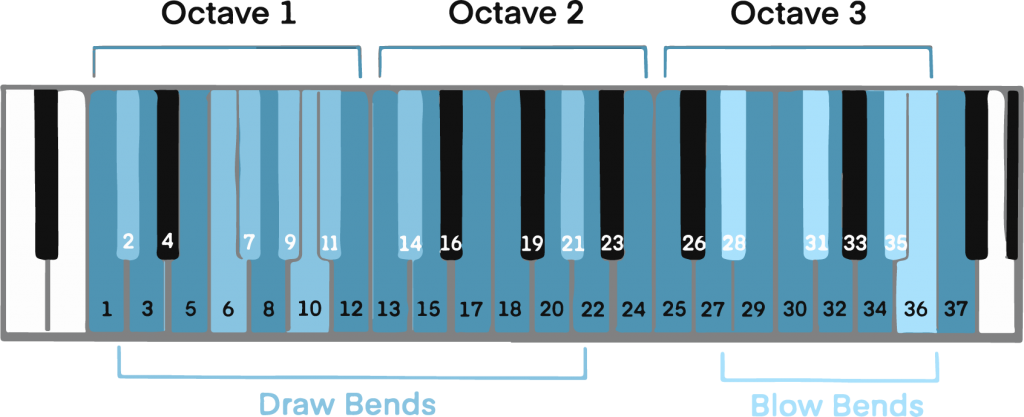
Using the very advanced overblow technique (which I first learned last year, after 27 years of playing) I am able to get another 3 notes, bringing us to 34:
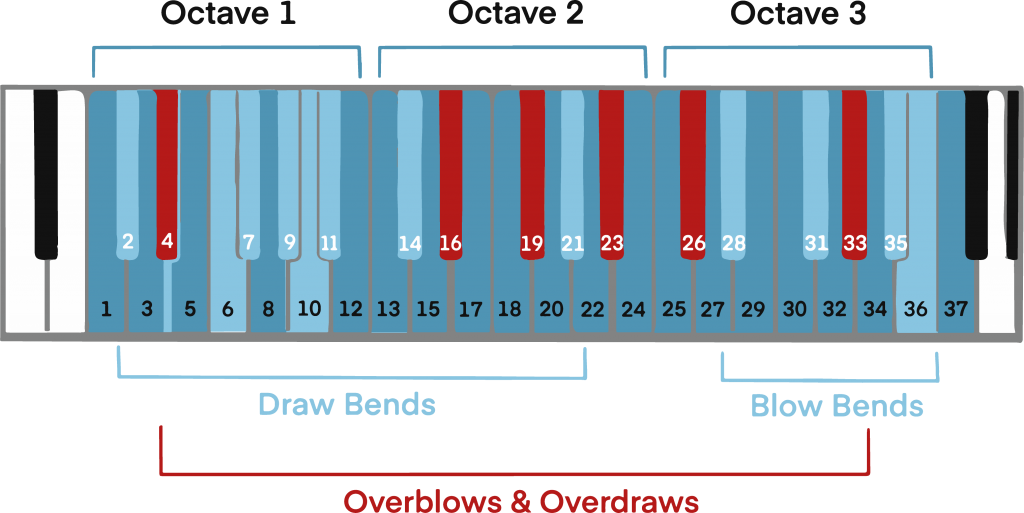
(The notes I’m able to play on the graphic above are numbered 16,19, & 23, and are the “easiest” 3 overblows to achieve.) For the final 3 missing notes, I’d need to modify my harmonica (to be able to play overblow on 1 and overdraws -7 & -9 corresponding to notes 4, 26, and 33 on the keyboard graphic above) which I’ve never yet done, and can’t do without custom modifications to my harmonica. Case closed.
So while it is possible to play jazz, or other highly chromatic music on the diatonic harmonica, most advanced jazz and contemporary classical compositions are more often played on the chromatic harmonica. Most people consider it to be a better tool for the job. If you already understand Jazz music theory on the piano, or some other instrument, then you may want to skip the diatonic and go straight to the chromatic.
Diatonic Best Brands
My Which Harmonica to Buy? page has the full low-down on all the diatonic brands you’ll want to consider. If you’re after a quick run down…
Hohner is the oldest and most popular brand of diatonic harmonica. The Hohner Special 20 is probably the most common and best Hohner for beginners.
My other favorite Hohner’s are The Crossover, Marine Band 1896, and the Golden Melody. For more details you can check out my video of my personal Top 5 Favorite Hohner’s.
But I’m also a huge fan of Lee Oskar harmonicas, which have been my harmonica of choice for most of my life.
For more info check out my full Lee Oskar Harmonica Review.
The Chromatic Harmonica
| PROS |
|---|
| • Better suited for Jazz |
| • No missing notes (access all 12 notes per octave) |
| • “Solo” tuning is similar to Diatonic holes 4 through 7 |
| • Intuitive for pianists comfortable with key signatures |
| • Side-button can be used for grace notes to add soulful flare |
| • All notes are accessed in same pattern across the whole harmonica |
| • Play in any key with just 1 harmonica – no need to buy multiple harmonicas |
| CONS |
|---|
| • More difficult to play, blowing/drawing while pressing/releasing side button |
| • Can’t bend notes like a Diatonic for that raw, bluesy sound |
| • Requires a deep understanding of music theory |
| • Much slower learning curve. |
| • Easy to play “wrong” notes |
| • Very Expensive! |
What is a Chromatic Harmonica?
The concept of the chromatic harmonica is simple: since we’re missing lots of half-steps on the diatonic harmonica, why don’t we just take two harmonicas a half-step apart from each other, and put them into one instrument, with a mechanism for the player to choose which harmonica he wants to play at any moment. Genius!
So a chromatic harmonica is a C harmonica and a C# harmonica wrapped up into one big fat harmonica! That’s why chromatic harmonicas are so much bigger than diatonic harmonicas.
The chromatic harmonica has a spring-loaded button on the side, connected to a lever that switches which harmonica will receive air from the player. Playing with the button released is playing the C harmonica. Playing with the button in is playing the C# harmonica.
So any note you play on the chromatic harmonica will be raised a half-step by pressing the side button.
All these moving parts make the chromatic harmonica much more complicated to manufacture, which is why they are so much more expensive. And it also makes them more prone to need fixing – the chromatic harmonica is much less durable than the diatonic harmonica.
While chromatic harmonicas do come in 8,10, 12, 14, and 16-hole versions, the 12-hole chromatic harmonica is by far the most common. The 12-Hole covers 3 octaves, and produces 48 tones. And while it is produced in different keys, the 12-hole in the Key of C is by far the most common.
The tuning of a standard 12-hole Chromatic harmonica takes the standard tuning of the diatonic holes 4-7 (which sounds like playing from C to C on the white keys of the piano) and mimics the pattern on holes 1-4, 5-8, and 9-12.
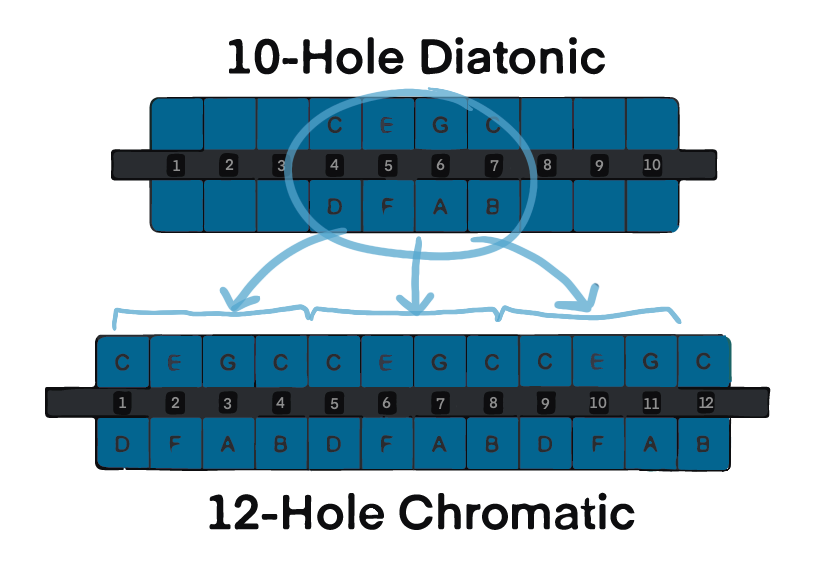
So, again, learning the diatonic is a great place to start, even if you eventually want to learn the chromatic harmonica.
Probably the most confusing thing about the chromatic harmonica tuning for someone transitioning from the diatonic, is that blow 4 and blow 5 in the lower octave are the same note C, and blow 8 and blow 9 in the middle octave are the same note C. That takes some getting used to!
While the chromatic harmonica adds another layer of theory to what we have to learn, and its button adds another layer of dexterity to have to practice, perhaps the single biggest deterrent to the chromatic harmonica, for many people, is actually its price.
Chromatic Pros
Jazz Masters
A name synonymous with chromatic harmonica is the jazz virtuoso Toots Thielman who began his career in the 1950’s and continued all the way until his passing in 2016. Some of my personal favorites of his are from his work with The Brazil Project. In my opinion, one of the greatest living jazz chromatic harmonica players is Grégoire Maret.
If you’re serious about jazz, then you’ll probably want to explore the chromatic harmonica.
But Also for Blues
But jazz isn’t the only place you’ll find the chromatic harmonica. Some of the finest blues diatonic harmonica masters also incorporated the chromatic into their work, such as Little Walter, Rod Piazza, and George “Harmonica” Smith.
These players sometimes chose to use the chromatic to achieve a big fat sound. Some claim that it was the chromatic harmonica that first inspired the wonderful nickname for the harmonica: The Mississippi Saxophone. Check out George “Harmonica” Smith showing how a chromatic harmonica can work well in a blues context in this rare video:
(You may have noticed in this recording that he’s not using the side button. That’s very typical for blues players of his era. Blues players approach the chromatic harmonica from a theoretical framework that diatonic players would call “3rd position,” sometimes referred to as “slant harp,” which equates to using a C harmonica to play in the key of D minor.)
The Tuning
One thing about the chromatic that is easier to learn than the diatonic, is you can play across the entire range of the instrument. On the diatonic harmonica, the notes in the bottom, middle, and top octave are each accessed in different ways requiring the player to memorize a whole new pattern of blows and draws to move something from the bottom up to the top of the harmonica. That’s why many diatonic harmonica players don’t access the whole range of the instrument.
The nice thing about the tuning of the chromatic is that once you can play something in one octave, you can play it in the other two octaves using the exact same patterns. The order of notes on holes 1-4 is mirrored exactly in the middle octave holes 5-8, and the high octave holes 9-12.
Chromatic Cons
It’s Pricey!
I own a 12-hole Suzuki SCX-48, and it set me back over $300 – that’s a lot of money to spend on just one harmonica!!!
There was a period in the middle of my last 3 decades of playing harmonica where I was on a serious quest for the “missing notes” on the diatonic harmonica. One point in this journey led me to shell out the big bucks for the SCX-48 and declare, “I’m gonna learn the chromatic!” I think I stuck with it for a month or two, and it’s been mostly just sitting in its case ever since.
No Bends, No Soul?
The chromatic harmonica does not afford the player the same opportunity for soulful bending that the diatonic harmonica offers. For me personally, I think that’s why mine mostly sits in its case. But that doesn’t mean that it can’t be played in a soulful way!
The chromatic harmonica is Stevie Wonder’s instrument of choice, and he plays it almost exclusively (although he does play the diatonic on Boogie On Reggae Woman.) Here he is, showing us how soulful the chromatic harmonica can sound:
Chromatic Best Brands
If you want a really professional quality instrument for a great value, when it comes to chromatic harmonicas, the Suzuki SCX-48 is my #1 recommendation. As the Lee Oskar and Special 20 are to the diatonic, so the Suzuki SCX-48 is to the chromatic: best bang for your buck for a professional grade harmonica.
Suzuki also manufactures a 14-hole version called the SCX-56, and a 16-hole version called the SCX-64. But the SCX-48 is already HUGE compared to standard 10-hole diatonic harmonica. Trust me, in this case, bigger is not better. The SCX-48 is your best value. I can almost hear you asking me, “$300 is a great value!?” Compared to the Hohner Meisterklasse which is over $780, you bet it is!
And if you are looking for the very best of the best chromatic, then the Hohner Meisterklasse probably is your instrument.
Hohner does make less expensive models though. Probably the most common chromatic harmonica for Blues players is the Hohner 270 Deluxe, and it’s roughly comparable in price to the Suzuki SCX-48. The 270 Deluxe was first introduced in the 1930’s, and it has been updated along the way, and is a very common choice.
On the other end of the spectrum, if you’re looking for something even more affordable than the Suzuki SCX-48 or the Hohner 270 Deluxe, you could consider the Hohner 7542BX-C 48R or the Hohner CX-12.
The CX-12 has a darker tone compared to the 270 Deluxe, and it’s pretty cool looking, and with it’s plastic body, it is very comfortable on the lips.
Years before I’d purchased my Suzuki SCX-48, I had once bought a Hohner Chrometta 10, and I did not like it at all. The shape is very awkward to play. I know it’s much cheaper than the CX-12, but in my opinion the CX-12 is the least expensive chromatic harmonica you should consider. That’s why one of the big cons to the chromatic is the price! The cheapest diatonic I recommend is about $15, and the cheapest chromatic I recommend is over $200!
Whichever brand chromatic you decide to purchase, I highly recommend that you start with a 12-hole chromatic. The 16-hole versions are too easy to get lost on, the size and weight is cumbersome, and the 12-hole is by far the most common version.
The Tremolo Harmonica
| PROS |
|---|
| • Old-timey sound was very popular in early to mid-1900’s |
| • Cool beating sound from doubling of reeds |
| • Tone more like an accordion |
| • Very popular in East Asia |
| CONS |
|---|
| • More airflow required to play |
| • 2 holes per note makes it more confusing to learn |
| • More refined technique isolating single reed to bend notes |
| • Bends on single reeds makes the timbre of bent notes stick out |
| • Bending challenges + layout of notes = unsuitable for playing the blues |
What is Tremolo Harmonica?
Playing a note on either the diatonic or the chromatic harmonica causes a single metal reed to vibrate in the player’s breath. The concept of the tremolo harmonica is to have two reeds vibrate on every note instead of just one. This concept is similar to that of the accordion, another free reed instrument, where the accordion might have several reeds per note – even as many as 8 or more!
Tremolo Pros
What is that Cool Sound?
Tremolo harmonicas produce a distinctive “beating” sound effect, made possible by vertical double holes each with two reeds, one a little sharp and the other a little flat.
If you’re familiar with effects pedals, the sound is similar to what’s known as a Chorus, Tremolo, or Vibrato effects. If you’re familiar with acoustic guitars, the sound is similar to how a 12-string guitar uses 2 strings for each note. The subtle variations in tuning produce a pleasing warble in the sound of each note.
Tremolo harmonicas have a cool sound like an organ, but they are much less common in contemporary popular music in the Western world. They actually were very popular in the early to mid-1900’s, but with the growth of popularity of the American Blues music in the 60’s and 70’s, the popularity of the tremolo Harmonica has waned to the point of being almost non-existent today. But they are still very popular in East Asia.
Tremolo Cons
What’s the Tuning?
Like the chromatic harmonica, the tuning of the tremolo harmonica also takes the tuning of the diatonic harmonica Holes 4-7 (which sounds like playing from C to C on the white keys of the piano) and mimics the pattern on holes 1-4, except that because there are 2 reeds per note, it’s actually holes 1-8 (holes 1 & 2 are the same note, holes 3 & 4 are the same note, etc.). Confusing, right?!
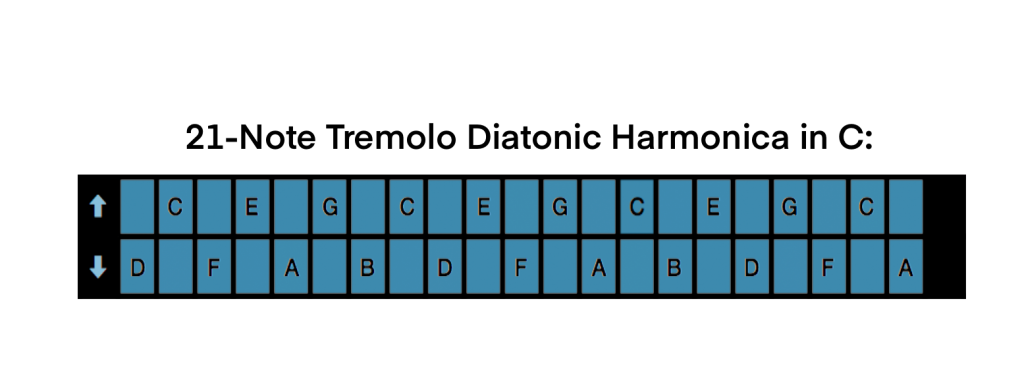
The tuning varies in each octave, and it is a bit challenging for me to really get the hang of playing cleanly across all 3 octaves. It’s almost like trying to switch between 3 harmonicas while you’re playing.
Just like the standard diatonic provides an easier fundamental learning experience that can then be transitioned to the chromatic harmonica, the fundamental techniques learned can also be transitioned easily to the tremolo harmonica. Having 2 holes per note creates more confusion for a beginner compared to a standard 10-hole diatonic, which is another reason why we don’t recommend beginners to start with it.
(Note that the chords produced by this tuning are a I chord blowing and ii chord drawing, whereas the tuning of the standard diatonic harmonica is I chord blowing and V chord drawing, as I show in my Harmonica Chords lesson.)
This tuning does not lend itself well to Blues. Whereas some blues players who play mostly diatonic, also might incorporate some chromatic into their repertoire, I’ve never heard anyone try and play Blues on tremolo. In part that is because of the tuning, and in part because of the difficulties with bending.
It is possible to bend notes on the tremolo, but it requires isolating just one note instead of two, so there is a distinct change in the timbre of the note being bent compared to the beautiful beating unbent notes.
One final note about the tremolo – it technically is a “diatonic” tuned harmonica. Colloquially, the “standard 10-hole diatonic harmonica” is what we call our favorite harmonica to distinguish it from the chromatic and the tremolo harmonicas, but in reality, since the definition of the word diatonic is actually just “deriving from a 7 note scale” the tremolo harmonica is in fact a harmonica with a diatonic tuning.
The tremolo harmonica has a beautiful sound for playing traditional melodies, folk melodies, and country melodies.
Tremolo Best Brands
At the time of this writing, and partly in an effort to revitalize the tremolo’s popularity, Lee Oskar is offering a brand-new tremolo harmonica called “The Hawaiian Harmonica” which comes with a book of tabs of how to play 25 traditional Hawaiian songs, and recordings of Lee Oskar playing the melodies along with an ukulele on the Hawaiian Harmonica.
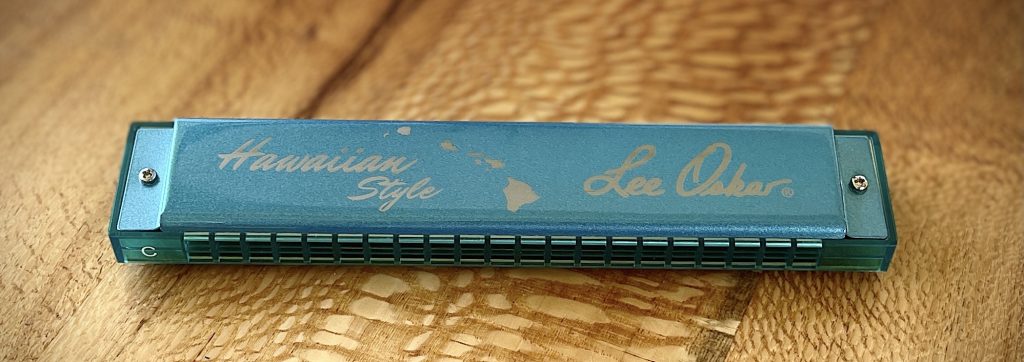
Lee Oskar sent me a Hawaiian Harmonica prototype a couple of months ago, and I’ve been having fun playing it. It’s much easier to play than other tremolo’s I’ve tried, so if you’re looking to buy a tremolo, this would be my personal recommendation. They are currently being manufactured in the key of G and the key of E.
Hohner makes many tremolo harmonicas such as the, Echo 32, Echo 2×32, Echo 48, Echo 2×48, Big Valley 48, Golden Melody Tremolo, Ocean Star 48, and the Tremolo Sextett .
Suzuki makes the Winner 16 Tremolo and the Winner 20 Harmonica.
The Japanese harmonica manufacturers (Tombo and Suzuki) tend to have the double reeds tuned a bit closer together than the German harmonica manufacturers (Hohner and Seydel,) and the “beat” of the way these reeds are tuned creates a more elegant, sweeter sound.
Also the Tombo manufacturer of harmonica, which manufactures Lee Oskar harmonicas also manufactures tremolo harmonicas in all keys and in alternate tunings Natural Minor and Harmonic minor. Because of their lack of popularity in North and South America, players in these regions seeking other keys or tunings need to contact Tombo directly which can be done using the contact form on this page.
Conclusion
And that’s a great introductory exploration of the 3 most popular types of harmonicas. In summary,
- The Tremolo harmonica has a beautiful tone for playing traditional songs, but some models can be a bit difficult to play, and none are suitable for playing the blues.
- The Chromatic harmonica is expensive, but is the best harmonica for playing sophisticated chromatic music like Jazz. Some blues players also use them for a fat 3rd position sound.
- The Diatonic harmonica standard 10-hole is the best for nailing that wailing Blues sound, and it’s the most common harmonica heard in American popular music. It’s also the easiest harmonica on which beginner’s can learn to play and start sounding great right away. In addition, it’s the least expensive & most durable of the 3 harmonica types discussed on this page.
If you have any further questions or comments, please leave them below.
Aloha,
Luke
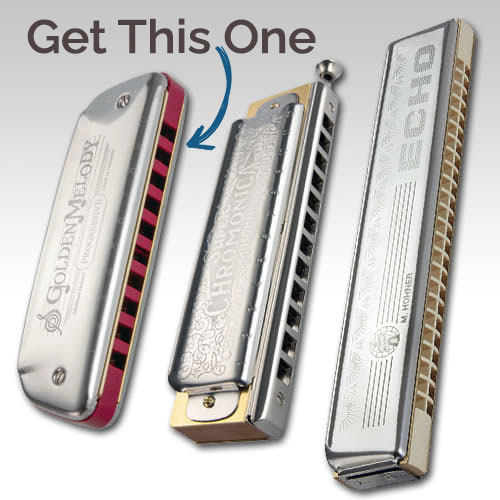
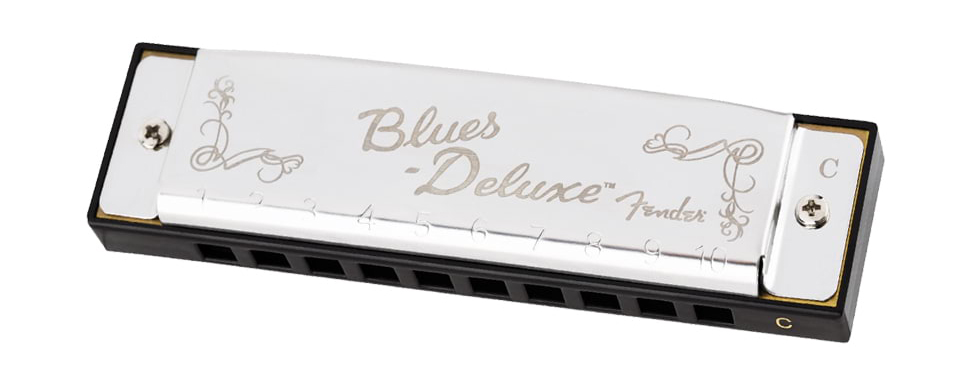
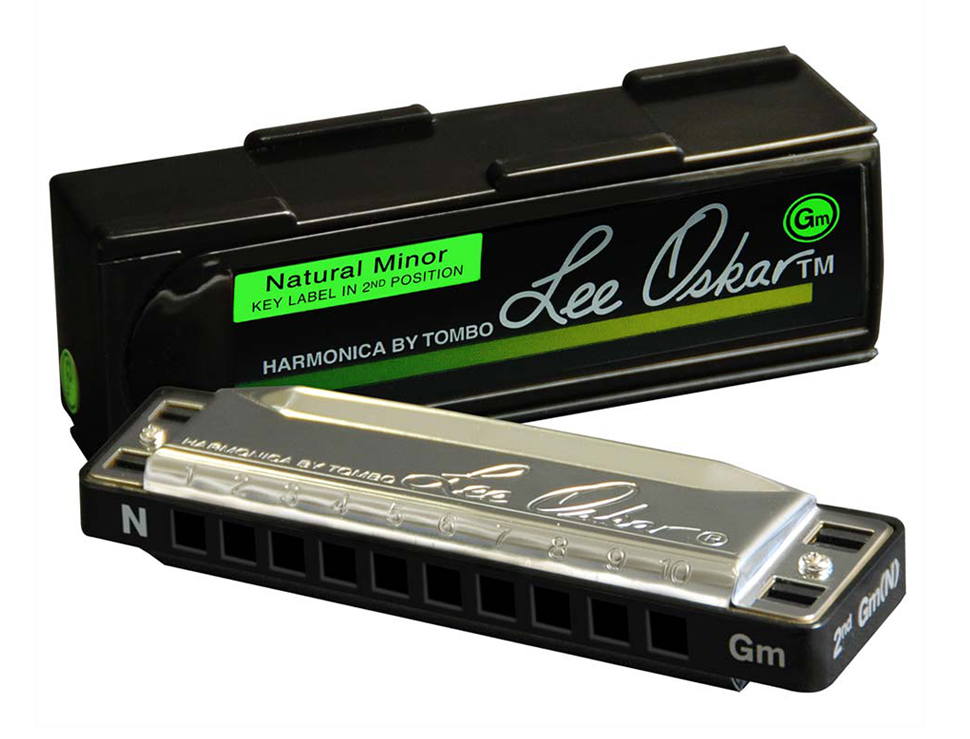
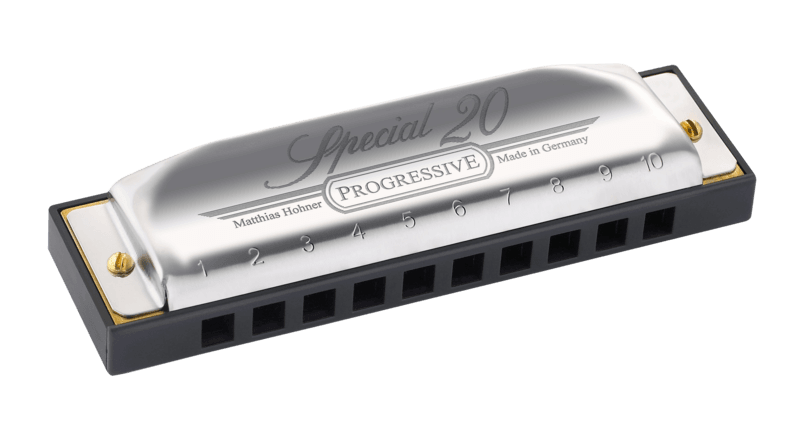
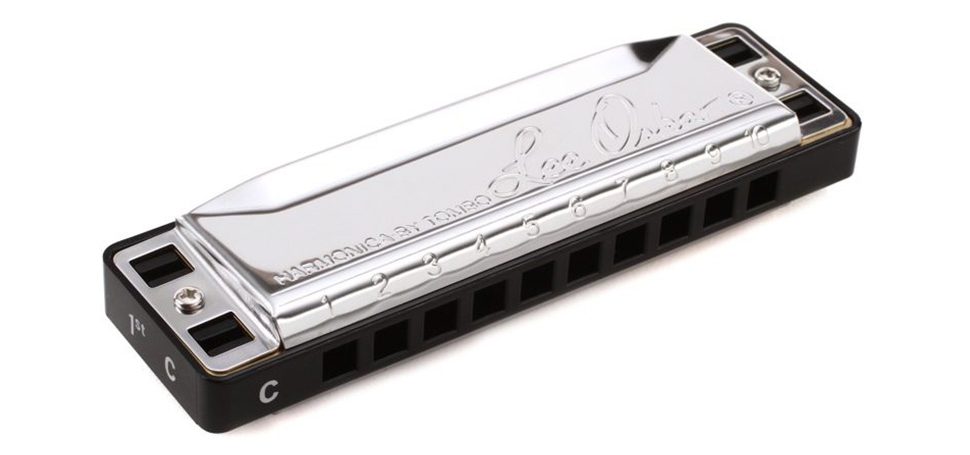
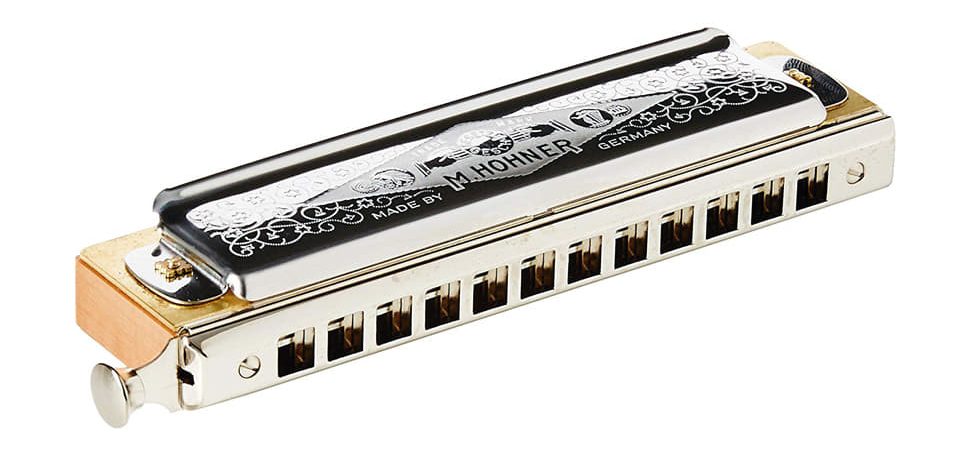
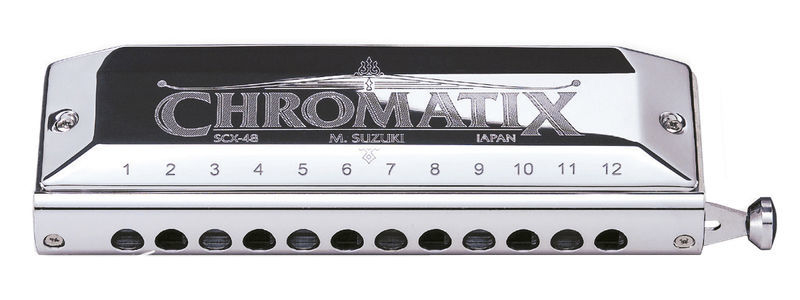
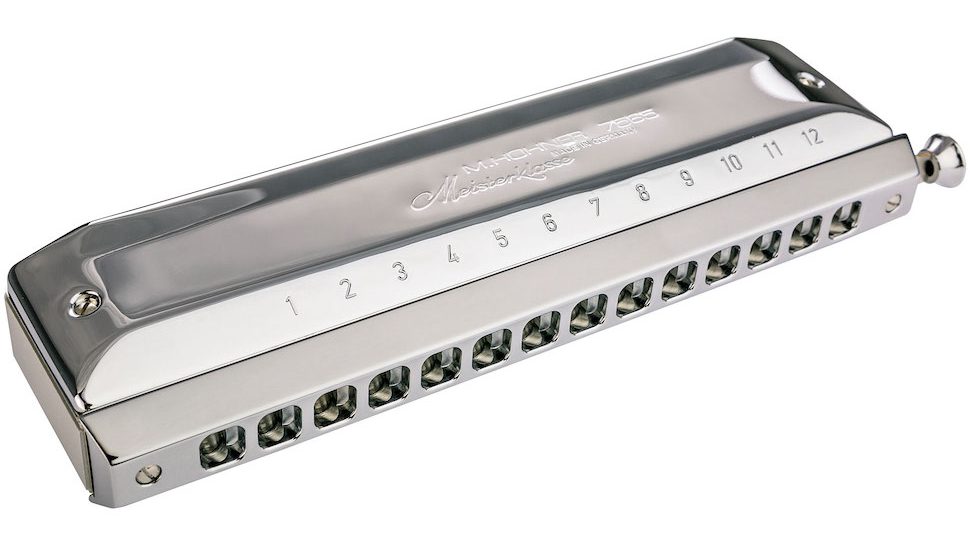
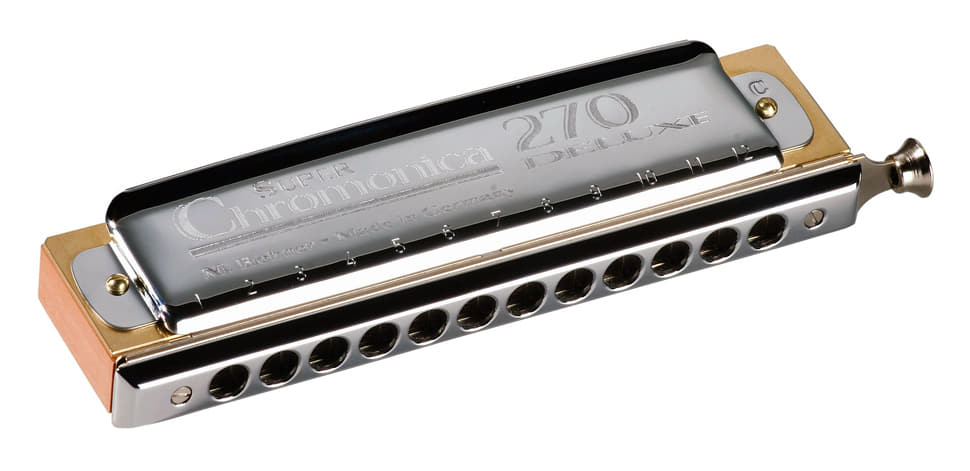
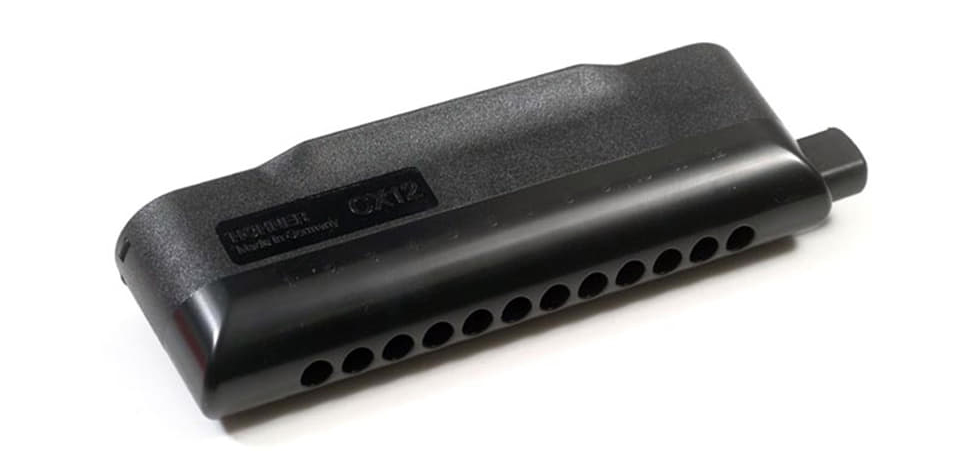

Comments
Got something to say? Post a comment below.